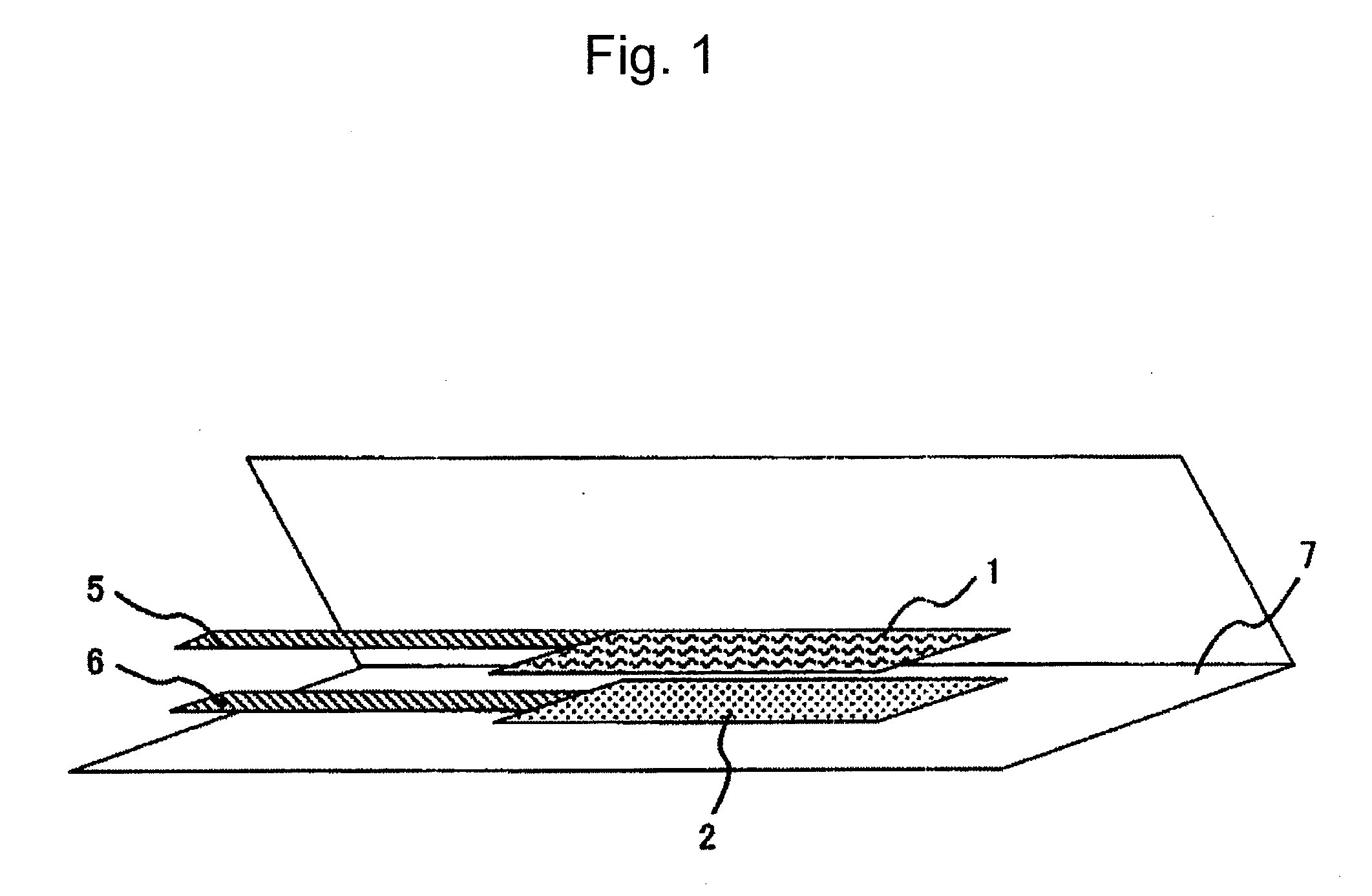Electrode for Polymer Electrolyte Secondary Battery and Polymer Electrolyte Secondary Battery
a secondary battery and polymer electrolyte technology, applied in the direction of non-aqueous electrolyte cells, cell components, electrochemical generators, etc., can solve the problems of lowering the charge/discharge capacity, the ions are not smoothly intercalated or deintercalated between active materials, and the polymer electrolyte cannot follow expansion, so as to improve the charge/discharge characteristics and increase the charge/discharge current density
- Summary
- Abstract
- Description
- Claims
- Application Information
AI Technical Summary
Benefits of technology
Problems solved by technology
Method used
Image
Examples
example 1
[0082] Vinyltriethoxysilane (trade name: A151, Nippon Unicar Company Limited) was first dispersed in pure water in an amount of 10% by weight thereof, the resulting dispersion was added to 100 parts by weight of lithium manganate powder (trade name: E10Z, Nikki Chemical Co., Ltd.) in an amount equivalent to 1 part by weight thereof, and the mixture was thoroughly mixed. Thereafter, the resultant was subjected to vacuum drying at 150° C. for 2 hours to obtain a silane-treated positive electrode active material.
[0083] Further, vinyltriethoxysilane (trade name: A151, Nippon Unicar Company Limited) was first dispersed in pure water in an amount of 10% by weight thereof, the resulting dispersion was added to 100 parts by weight of amorphous carbon (trade name: Carbotron PE, Kureha Chemical Industry Co., Ltd.) in an amount equivalent to 1 part by weight thereof, and the mixture was thoroughly mixed. Thereafter, the resultant was subjected to vacuum drying at 150° C. for 2 hours to obtain...
example 2
[0089] Evaluation was carried out in a manner identical to that of Example 1 except that 8.27 parts by weight of LiBF4 was used instead of 25.3 parts by weight of LiN(CF3SO2)2 as the electrolyte salt. The results are shown in Table 1.
example 3
[0090] Evaluation was carried out in a manner identical to that of Example 1 except that 34.1 parts by weight of LiN(C2F5SO2)2 was used instead of 25.3 parts by weight of LiN(CF3SO2)2 as the electrolyte salt. The results are shown in Table 1.
PUM
| Property | Measurement | Unit |
|---|---|---|
| molar ratio | aaaaa | aaaaa |
| molar ratio | aaaaa | aaaaa |
| molar ratio | aaaaa | aaaaa |
Abstract
Description
Claims
Application Information
 Login to View More
Login to View More - R&D
- Intellectual Property
- Life Sciences
- Materials
- Tech Scout
- Unparalleled Data Quality
- Higher Quality Content
- 60% Fewer Hallucinations
Browse by: Latest US Patents, China's latest patents, Technical Efficacy Thesaurus, Application Domain, Technology Topic, Popular Technical Reports.
© 2025 PatSnap. All rights reserved.Legal|Privacy policy|Modern Slavery Act Transparency Statement|Sitemap|About US| Contact US: help@patsnap.com



